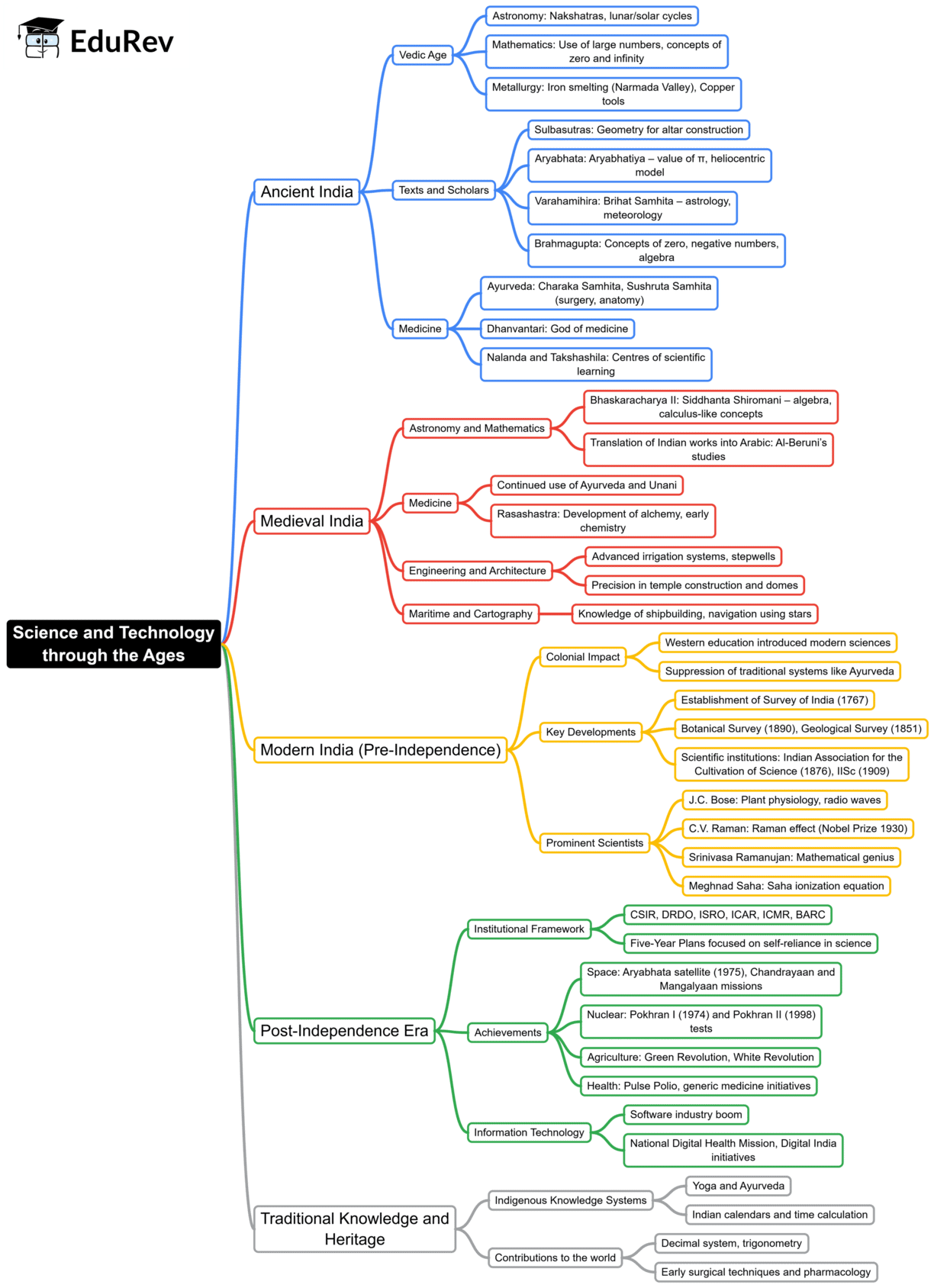UPSC Exam > UPSC Notes > History for UPSC CSE > Mind Map: Science and Technology through the Ages
Mind Map: Science and Technology through the Ages | History for UPSC CSE PDF Download

The document Mind Map: Science and Technology through the Ages | History for UPSC CSE is a part of the UPSC Course History for UPSC CSE.
All you need of UPSC at this link: UPSC
|
110 videos|653 docs|168 tests
|
FAQs on Mind Map: Science and Technology through the Ages - History for UPSC CSE
| 1. What are the major scientific discoveries that have shaped human civilization throughout history? |  |
Ans. Major scientific discoveries include the invention of the wheel, which revolutionized transport; the discovery of electricity, leading to numerous technological advancements; the formulation of the theory of evolution by Charles Darwin, which changed our understanding of biology; and the development of vaccines, significantly reducing disease mortality. These discoveries laid the foundation for modern science and technology.
| 2. How has technology influenced the development of societies across different periods? |  |
Ans. Technology has played a crucial role in societal development by enhancing communication, transportation, and production. For instance, the Industrial Revolution marked a shift from agrarian societies to urban industrial centers, fostering economic growth and social change. Similarly, the digital revolution has transformed how we access information and connect globally, influencing culture and daily life.
| 3. What role did ancient civilizations play in the advancement of science and technology? |  |
Ans. Ancient civilizations such as the Egyptians, Greeks, and Chinese made significant contributions to science and technology. The Egyptians excelled in medicine and engineering, the Greeks laid the groundwork for mathematics and physics, and the Chinese invented important technologies like papermaking and the compass. These advancements were pivotal in shaping subsequent scientific thought and technological innovation.
| 4. What impact did the Scientific Revolution have on modern science and technology? |  |
Ans. The Scientific Revolution, which occurred from the 16th to the 18th centuries, marked a fundamental shift in scientific thinking. It emphasized observation and experimentation, leading to the development of the scientific method. This period produced groundbreaking work from figures like Galileo and Newton, which laid the groundwork for modern physics and chemistry, ultimately fostering technological advancements that transformed society.
| 5. How do contemporary issues in science and technology relate to historical developments? |  |
Ans. Contemporary issues such as climate change, biotechnology, and artificial intelligence are deeply rooted in historical developments. For instance, the Industrial Revolution's reliance on fossil fuels has contributed to current environmental challenges. Additionally, historical advancements in genetics have paved the way for modern biotechnological applications, illustrating how past discoveries continue to influence present and future scientific landscapes.
Related Searches





















